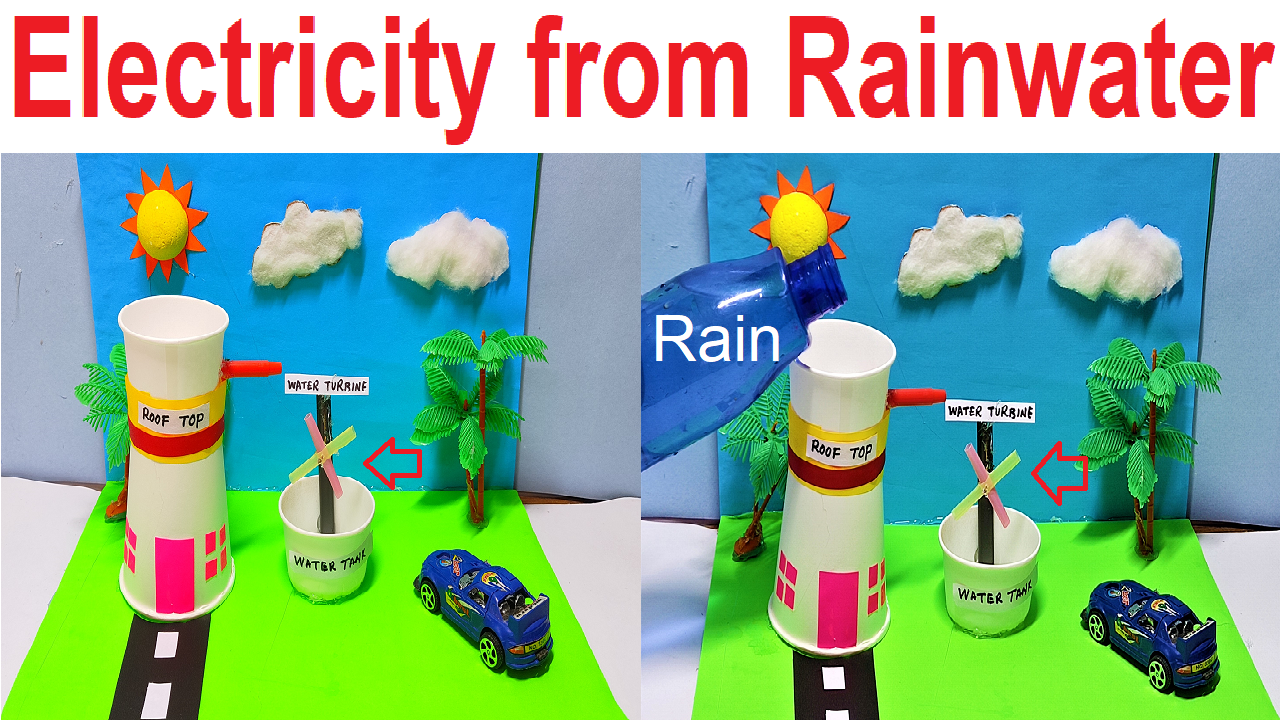Introduction:
In this project, we will create a working model that demonstrates the concept of generating electricity from rainwater harvested on the rooftop of a house. Using simple materials like paper cups and straw pipes, we’ll showcase how rainwater can potentially be utilized to generate a small amount of electrical energy.

Materials Needed:
- Paper cups
- Straws
- Small LED bulb
- Copper wire
- Aluminum foil
- Small pieces of cardboard
- Alligator clips
- Hot glue gun or adhesive
- Water (to simulate rainwater)
Step-by-Step Explanation:
- Constructing the Setup:
- Cut two paper cups to create shallow containers. These will serve as the rainwater collectors.
- Cut straws to the desired lengths, depending on the setup size.
- Creating the Rainwater Flow Path:
- Connect the paper cups with the straws, creating a flow path for the simulated rainwater. One cup represents the rooftop collection area, and the other cup represents a lower storage container.
- Assembling the Electrical Components:
- Attach aluminum foil to the inside bottom of the upper paper cup. This acts as the conductive surface for the electrical connection.
- Attach a small piece of cardboard to the bottom of the lower paper cup, creating an insulated base.
- Creating the Electrical Circuit:
- Attach a copper wire to the aluminum foil inside the upper cup.
- Attach the other end of the wire to the LED bulb’s positive terminal.
- Completing the Circuit:
- Connect another copper wire to the LED bulb’s negative terminal.
- Position the other end of this wire in the lower paper cup, but not touching the cardboard.
- Simulating Rainwater:
- Pour water into the upper paper cup, simulating rainwater harvesting from the rooftop.
- Observing LED Illumination:
- As water fills the upper paper cup and comes into contact with the aluminum foil, it completes the circuit and causes the LED bulb to light up.
Demonstrating Rainwater Electricity Generation:
- Explain that rainwater serves as a conductor between the aluminum foil and the copper wire, completing the electrical circuit and causing the LED bulb to light up.
Conclusion:
Through the rainwater electricity generation model, you’ve demonstrated how rainwater can be harnessed to complete an electrical circuit and power a small LED bulb. This project showcases the potential for utilizing rainwater as a source of energy.

